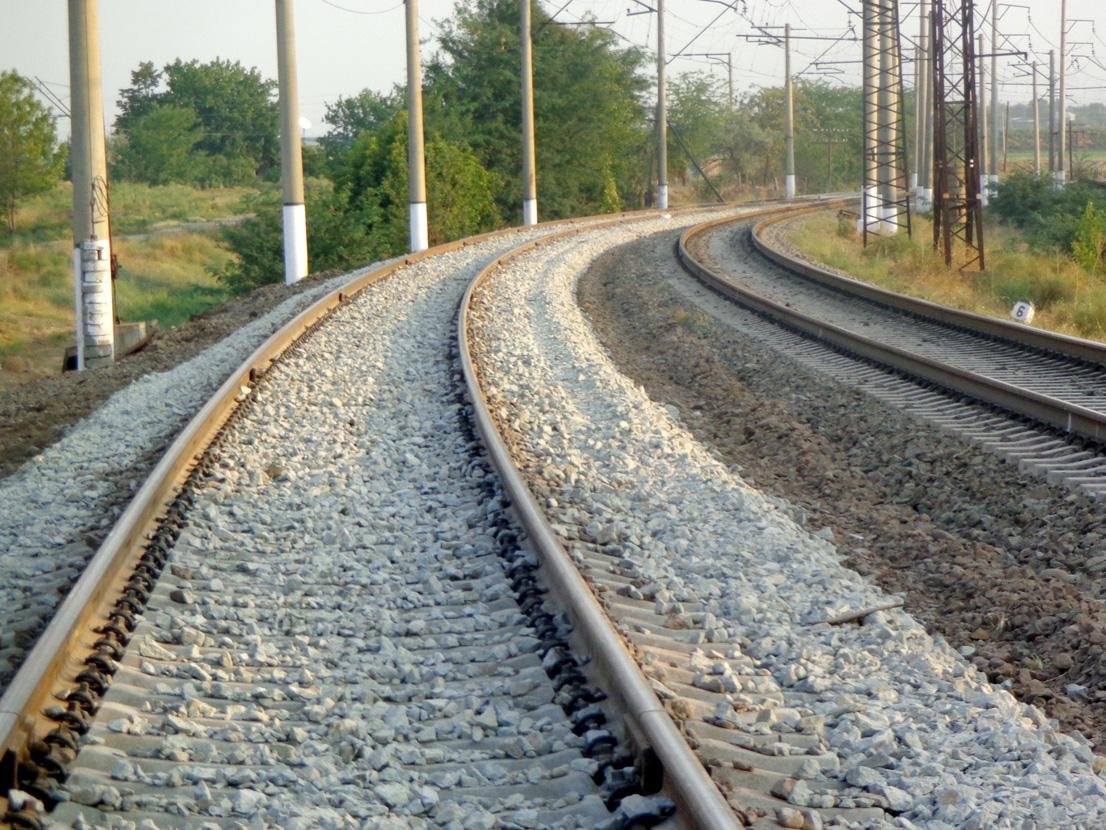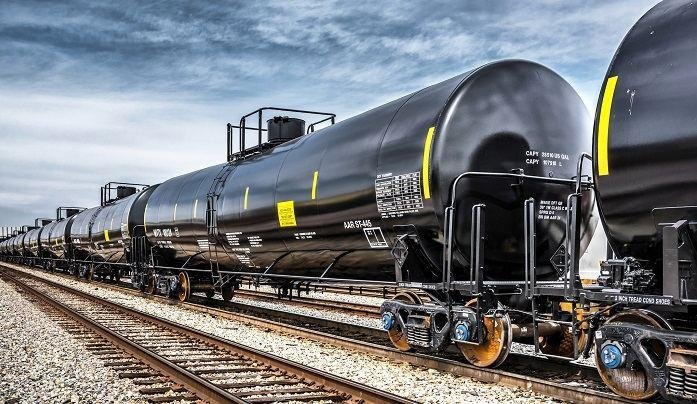Russia's cross-border route to Azerbaijan and Iran ready to go Baku declaration in effect
The global significance of the South Caucasus transport potential has increased amid the Ukrainian conflict and other geopolitical changes, which strengthened Moscow's and Tehran's desire to diversify logistics and increase the flow of goods along the North-South corridor. Azerbaijan has an advantageous position in this regard, as it has developed some railway infrastructure in the border region of Astara and is also rapidly rebuilding its transport network in the Karabakh region.
The main roads of the Zangazur corridor will be completed by the end of 2023, followed by the completion of the railways. A logical continuation of these initiatives should be the completion of the railroad section between Resht and Astara in Iran, and the Azerbaijani-Russian-Iranian meeting held recently in Baku resulted in the signing of a declaration, which launched the creation of the North-South through-rail corridor.
Against the backdrop of the intensifying sanctions confrontation between the EU and Russia, Russian transport links with Scandinavian, Northern, and Central European countries have virtually come to a halt, and today Russian freight forwarders intend to multiply trade cooperation with the countries of the near abroad. It's not just about China and Central Asian countries, but first and foremost about redirecting cargo traffic southwards to Iran, the ports of the Persian Gulf, and India. This interest is mutual, and during the current year's Russian-Iranian negotiations at various levels, agreements have been reached to increase the trade turnover between the countries in the next few years from the current four to $40 billion. In order to optimize this work, a special Working Group under Iran's Ministry of Roads and Urban Development has been created, whose tasks include completing the construction of the Resht-Astara railway, as well as solving issues of connecting the railway to ports in the Persian Gulf. For the same purpose, Russia will allocate $1.5 billion for the expansion of bottlenecks and modernisation of the railway infrastructure of the ITC.

However, the optimal overland corridor to the south runs through Azerbaijan, opening a window of opportunity for the multiplication of freight transit through the North-South International Transport Corridor (ITC). Transshipment of cargo along this route (from the Baltic harbours of the Russian Federation to the Indian port of Mumbai), which is about 7,000 kilometres long, takes about 22-23 days and reduces transport costs by 30% compared with a long sea route, for example, through the Suez Canal.
The overland rail route through Azerbaijan is optimal in terms of time and cost (tonne/km) of goods transported, especially when compared with the eastern route, via Turkmenistan. Rail transshipment through the territory of our country is also not inferior in a number of parameters to maritime transport of goods between the port of Olya and Iranian harbours - Enzeli, Bender-Abbas on the Caspian Sea. The advantages of the Azerbaijani route include the availability of double-track, electrified and equipped with optical communication channels railway infrastructure, modernisation of which on the section Baku-Yalama was carried out at the expense of a $400 million loan from the Asian Development Bank. Also by the end of 2022 Azerbaijan will complete the construction of the second Samur-Baku road. In 2019, a new road bridge between Yalama and Gazmalar on the Azerbaijan-Russian border on the Samur River was put into operation, and this year a new checkpoint "Khanoba" (handles about 1,000 trucks per day), and a modernised checkpoint "Shirvanli" - for the transshipment of empty trucks - became operational. Thanks to the measures taken, there is now no congestion on the Azerbaijan-Russia border and, on the contrary, the volume of freight traffic is steadily increasing.
Azerbaijan has developed its transport infrastructure on its southern borders just as effectively: in 2018, a 243 km long, multi-lane, high-speed motorway from Alat to Astara - the state border of Iran - was put into operation. In the past four years, rails were laid from Astara to the state border, a railway bridge, and new terminals and border checkpoints were built, including the largest grain terminal in the region, AstaraGrainTerminal, with an annual capacity of 500,000 tonnes of grain. This Azerbaijan Railways facility is already involved in the transit transshipment of Russian grain to Iran and, in the future, to the Persian Gulf region and South Asia.
All the above infrastructure initiatives contribute to an increase in the volume of transit cargo transported along Azerbaijan's highways, multiplying the opportunities for accelerated border and customs inspections and thereby further improving the throughput potential of the North-South Corridor.
However, the full operation of the ITC railway route has been hampered in recent years by the unfinished 162 km of the Rasht-Astara section in Iran: this circumstance prevents the merger of the Ardabil railway with the railway lines of Azerbaijan and Russia and the full functioning of the North-South corridor. Also, the construction of the railway terminal in Astara in Iran is still incomplete.
In recent years, cargo handling in this section has been carried out by a combined rail-road-road scheme, with transshipment of railcars in Astara to heavy-duty trucks and container trucks, which obviously slows down traffic, reducing the profitability of transportation. Accordingly, the average annual volume of freight transported in 2021 was 450,000 tons, and in the first eight months of the current year, it has fallen to 165,000 tons, indicating a decline in freight traffic.
The current situation cannot suit any of the countries participating in the MTK route, and since the spring of 2022, the relevant departments in Moscow, Tehran, and Baku have agreed during a series of meetings to take operational steps to overcome the "bottleneck" effect in the Iranian Astara, when, with a relatively developed infrastructure on Azerbaijani territory, increasing cargo volumes can accumulate at the border due to the lack of the necessary capacities of terminals and connecting nodes of highways in Iran, and most importantly, the incompleteness of the Rasht -Astara railway section.
Therefore, since the end of last year, in order to expand transit by trucks, the construction of a new road bridge at the border has been accelerated, which will soon connect the Baku-Astara highway with the Erdebil-Astara-Resht highway: the bridge is expected to be operational by the end of this year. Work on optimisation of customs and cross-border procedures along the ITC route has also started: on August 22 in Tehran, the heads of customs authorities of Azerbaijan, Russia, and Iran signed a memorandum on the facilitation of cargo transit through simplification of customs procedures. According to the memorandum, in order to simplify customs control, the parties plan to expand the use of the electronic information exchange system, for which a special tripartite committee will be established.
However, the most important event in terms of significance was the meeting last Friday in Baku of Azerbaijani Deputy Prime Minister Shahin Mustafayev, Russian Deputy Prime Minister Alexander Novak and Iranian Minister of Roads and Urban Development Rustam Ghasemi, who signed a declaration on the results of the first trilateral forum on the development of the North-South ITC.
The initiator of the meeting and the signing of the Baku Declaration was Russia, where the Azerbaijani (western) route was recognised as the shortest and most optimal one for the transportation of goods by rail and road in various directions. The main outcome of the signing of the declaration was the decision to finalise as soon as possible the construction of the southern route. The parties agreed to create a special working group tasked with solving transport, transit, and procedural issues in the context of developing the corridor.

The participants of the meeting exchanged views on the ongoing infrastructure works and discussed further optimization of the development mechanisms of the ITC project. In particular, they touched upon the issues of overcoming the bottlenecks of the corridor, unification of cross-border procedures, facilitating the passage of transit and other cargo, expanding multimodal and container traffic, including through the development of navigation systems, electronic document management, etc. "Azerbaijan, Russia, and Iran intend to create a unified railway network, the construction of which will make it possible to increase the flow of goods along the land corridor by 15%. It is also necessary to ensure the protection of investments of the parties, create an end-to-end logistics service and a preferential tariff mechanism," said Russian Deputy Prime Minister Alexander Novak, a participant in the Baku forum, who noted that within three months the investment and funding sources are to be identified, and then a full-fledged agreement will be prepared.
The most significant outcome of the meeting was the agreement that the Rasht-Astara railway project would be finalised within a month. The document also mentions the prospects of integrating Iranian ports in the Persian Gulf (e.g., Chabahar) into the ITC system. As for the completion of the 162 km section in Iran, according to preliminary estimates, the main volume of financing may be provided by the Russian Federation. "We are ready to consider the issues of state financing and lending to achieve the set goals," said Russian Deputy Transport Minister Dmitry Zverev, a participant in the Baku meeting.
According to the declaration, all three countries voiced readiness to increase the capacity of the corridor to the required level with the expectation that by the end of 2030 the level of mutual transportation, as well as transit through Azerbaijan will reach about 15 million tons of cargo.
An equally important point in the Baku Declaration was the decision to provide trilateral support for all endeavours aimed at restoring the transport infrastructure of the corridor connecting the western regions of Azerbaijan with the Nakhchivan Autonomous Republic (NAR), and fully promoting trade and economic relations within the North-South and East-West routes running through the corridor.
To this end, for the past two years, Azerbaijan has been implementing a capital-intensive programme for the construction of highways and railway infrastructure in the East-Zangazur economic region. So, today the construction of the 124 km long Goradiz-Agbend highway is 59% complete and scheduled to be put into operation by the end of 2023. Also, the railway Goradiz-Aghbend (110 km) is done by 38% and it is expected to be completed in 2024.
In the future, the road and the 'steel' highway will be continued along the Zangezur corridor towards ANR, and relevant negotiations are underway with Armenia. Also in March this year Baku and Tehran reached an agreement on an alternative version of the route: the agreement provides for the construction of a 55 km long road and a parallel railway line Imishli (Azerbaijan) - Parsabad (Iran), four border bridges across the Araz River, including two roads with a pedestrian crossing and two railway bridges as well as to lay communication infrastructure and power lines across Iranian territory. There are also plans to build customs and border checkpoints capable of handling around 1,000 trucks per day.

As part of this project, the modernisation of the border railway junction at Julfa and the construction of another combined transshipment point at Ordubad for the transshipment of vehicles and trains are to be undertaken in NAR.
All the above is extremely important not only for Azerbaijan but also for other ITC participants, as it contributes to the creation of the second route after Astara, which in time will allow transporting additional 5-8 million tons per year, including the transit cargo of the forwarding companies involved in the North-South project.








